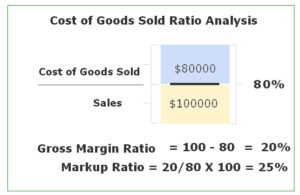Accounts payable Wikipedia
Often accounting clerks will manually match invoice line items against the PO and/or receipt line items by comparing the documents side-by-side as a part of the invoice management process. This method is time and resource-intensive without an accounts payable automation platform. Another, less common usage of « AP, » refers to the business department or division that is responsible for making payments owed by the company to suppliers and other creditors. The accounts payable employees would pay for many of these expenses upfront while providing reimbursement for any additional expenses incurred during this travelling period. Once these fees are covered, the financial teams would also be in charge of settling distributed funds against what was actually spent on the trip.
- It is not uncommon for some of this documentation to be lost or misfiled by the time the audit rolls around.
- For example, if management wants to increase cash reserves for a certain period, they can extend the time the business takes to pay all outstanding accounts in AP.
- If you’re a business owner, you need a complete understanding of the various components of the accounts payable process.
- This is in line with accrual accounting, where expenses are recognized when incurred rather than when cash changes hands.
- It’s important to understand the difference between accounts payable (AP) and accounts receivable.
Our goal is to deliver the most understandable and comprehensive explanations of financial topics using simple writing complemented by helpful graphics and animation videos. Finance Strategists is a leading financial literacy non-profit organization priding itself on providing accurate and reliable financial information Accounts Payable Ap Definition to millions of readers each year. This team of experts helps Finance Strategists maintain the highest level of accuracy and professionalism possible. Our team of reviewers are established professionals with decades of experience in areas of personal finance and hold many advanced degrees and certifications.
Free business plan templates
By contrast, a low accounts payable turnover ratio means there is more time from receiving an invoice to the time payment is made. When a company pays their supplier, the company needs to debit accounts payable so that the credit balance can be decreased. Accounts payable is a liability since it is money owed to one or many creditors. Accounts payable is shown on a businesses balance sheet, while expenses are shown on an income statement.
A knowledgeable and well-managed accounts payable department can save your organization considerable amounts of time and money with regard to the AP process. Accounts payable is the money a company owes its vendors, while accounts receivable is the money that is owed to the company, typically by customers. When one company transacts with another on credit, one will record an entry to accounts payable on their https://kelleysbookkeeping.com/general-ledger-accounting/ books while the other records an entry to accounts receivable. Generally, when a company purchases goods or services on credit from a vendor, the vendor will issue an invoice which the company must then pay back within the agreed-upon terms. The Company’s Accounting Department records payments made toward the invoice in their AP ledger and periodically reconciles this with statements received from suppliers.
What does an accounts payable department do?
Larger companies may even allot a specified amount for each department’s account. Conversely, employees may pay for a business lunch by using petty cash or a company credit card. The balance sheet records the sum of all outstanding bills a company owes its creditors. A healthy relationship with suppliers is vital to the success of any business. Your company’s accounts payable department facilitates these partnerships by ensuring timely, accurate payments, and maintaining accurate data.
- At the corporate level, AP refers to short-term payments due to suppliers.
- Both refer to the cash that your company spends or receives, but the key difference is found in the direction that your company’s money is flowing.
- Larger businesses or any business that requires staff to travel may have their AP department manage their travel expenses.
- When your business makes a purchase from a vendor, you usually do so on credit.
Proper data management can ensure that your company has an accurate picture of its short-term debts, which can help you to understand the way your liabilities impact the business as a whole. Modern AP teams are turning to automation to further optimize the accounts payable process. AP automation allows AP teams to review, approve & pay invoices almost instantly. Clearing payments in an appropriate schedule helps accounts payable departments to earn discounts and control cash outflow.
Who Manages Accounts Payable?
Like Accounts Payable, AR could refer to the department responsible for this money. Early payment programs, which include both dynamic discounting and supply chain finance, give you access to affordable liquidity as and when you need it. Last but not least, electronic invoicing techniques can enable suppliers to automate the delivery of their invoices straight to their customer’s ERP system. Companies should also be aware of the risks that can arise as a result of conflicts of interest, for example if an accounts payable employee has an undeclared interest in one of the company’s suppliers. If your organization is growing rapidly, and your current AP staff is finding it difficult to keep up with the amount of invoices they are managing, you might decide that it is time to hire another person.
Some people mistakenly believe that accounts payable refer to the routine expenses of a company’s core operations, however, that is an incorrect interpretation of the term. Expenses are found on the firm’s income statement, while payables are booked as a liability on the balance sheet. When using the indirect method to prepare the cash flow statement, the net increase or decrease in AP from the prior period appears in the top section, the cash flow from operating activities. Management can use AP to manipulate the company’s cash flow to a certain extent. For example, if management wants to increase cash reserves for a certain period, they can extend the time the business takes to pay all outstanding accounts in AP. Most suppliers will review these payment terms prior to sending their invoices.
How are accounts payable recorded on a balance sheets?
Increasingly, large firms are using specialized Accounts Payable automation solutions (commonly called ePayables) to automate the paper and manual elements of processing an organization’s invoices. Accounts payable (AP) is money owed by a business to its suppliers to vendors and suppliers for goods that have not been paid for. AP is an essential figure on a business’ balance sheet and can tell you a lot about its health and prospects for growth.

Ensuring the accuracy of data on the company balance sheet provides a clear, accurate picture of the company’s health and cash flow. Additionally, keeping up with a vendor’s payment schedule can minimize risk by verifying that bills are paid by the due date. Accounts payable (AP) represents the amount that a company owes to its creditors and suppliers (also referred to as a current liability account).
Automated processing helps companies easily achieve this balance while giving their accounting team more time to spend on other tasks. Every accounts payable department has a process to follow before making a vendor payment — this is the accounts payable process. Concrete guidelines are essential because of the value and volume of transactions during any period. Accounts Payable refers to a business’s obligations to suppliers and creditors for purchases made on an open account.

